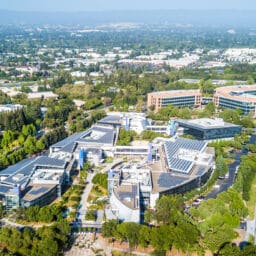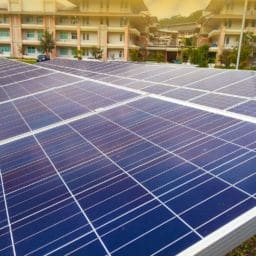A lot of press has been written lately related to California’s aggressive new policy to promote a 100% RPS by 2045. This issue has become much more relevant in light of President Trump’s recent decision to pull out of the Paris Climate agreement. Essentially, states are looking to supplant the Federal Government in the area of addressing Global Climate Change. As David Hochschild of the California Energy Commission recently stated, “ California has the sixth largest economy in the world and is home to 40 million people – we’re larger in many metrics than most countries in the world. I think particularly given recent events, leadership on the renewables has shifted to the states.” This is a very telling statement, because it says to the rest of the world, if the U.S. Federal Government will not step up, many of the largest states (by both geography and population) in the U.S. are not going to wait for them. States are going to continue to push policies that promote renewable energy and to increase the amount of energy coming from renewable sources.
Hurdles

That being said, as many have chimed in already, the reality of an energy grid being powered by 100% renewable energy is fraught with hurdles. Many of those hurdles are “supply side” issues related to the intermittent nature of renewable energy and the inability of today’s energy grid to balance the supply and demand of that energy production through the use of large utility-scale storage. Many have written on this topic extensively, but few are discussing the “demand side”. It’s one thing to build a grid that can support the use of 100% renewables. It’s quite another to fund the implementation and construction of those energy assets. To date, the vast majority of solar PV systems that have been installed in California have been either residential or utility scale systems. If we assume that the residential sector represents 15-20% of the overall market and the utility sector at 30-35%, we would only get to 45-55% of the total available market. The lion’s share of the usage of electricity comes from the Commercial and Industrial (C&I) sector. Why then, don’t we see the majority of solar PV installations coming from this sector? The simple answer is that this is the least funded sector from an investment perspective.
Solar PV is an expensive proposition and while many companies have a strong desire to adopt renewable energy, they also prefer to use their CAPEX budgets to build and support their own businesses, rather than funding long-term renewable assets. Solar City learned this lesson many years ago when it started in the residential market. Once they began offering low-cost, long-term financing to support solar PV, their sales soared. The C&I market is no different. Without a systematic, well-funded financing program for C&I assets, this market will languish. What makes matters worse is that by almost all accounts, this sector is (by far) the largest segment of the market, and has the least amount of penetration. So, one could ask the question, without a robust financing solution for the C&I market, how can California hope to reach their new 100% RPS target? The answer is, it is likely impossible.
Defining the C&I Space
To put some bounds around this problem, most would define the C&I sector as both for-profit and non-profit entities with solar PV system needs in the 50 kW to 5 MW space. However, the vast majority of systems needed in the C&I space are in the 50 kW to 500 kW range. Think of schools, churches, municipal buildings and local businesses. Just like the residential sector, without a financing mechanism, the total available market may drop from 50% of the total to less than 10%. The number of companies offering financing for solar PV systems below 500 kW is incredibly small, with most offering short and medium-term loans (which reduce the borrowing capacity of the off-taker), and some offering 7-10 year operating leases (which are economically challenging). What is truly needed to get this huge chunk of the market jump started is a third-party ownership model that offers Power Purchase Agreements (PPAs) and/or Solar Services Agreements (SSAs), targeted directly at the smaller end of the C&I segment. If this is such a large percentage of the market, and such an obvious target for financing companies, why aren’t there more solutions? The short answer is credit, and soft costs.
Evaluating Credit
Determining the credit quality of an unrated off-taker is a labor intensive process. The way the residential sector was able to overcome this was by adopting the FICO score which has been used for decades by those providing personal credit and home loans. Everyone has one, so it was easy for residential giants like Tesla Solar and Vivint to adopt this. However, for the C&I sector, no such rating system exists. Some small percentage of entities in the C&I space do have public credit ratings (think Walmart, most municipalities, and some schools), but the vast majority do not. Determining a systematic and efficient methodology for assessing credit is the first major hurdle to solving the C&I financing puzzle.
Soft Costs
The second major challenge for the small end of the C&I market is soft costs. These include legal fees for contract review, real estate expenses (like title searches and land surveys), accounting expenses, independent engineering costs, and many others. To get a financing institution comfortable with any project requires a lot of due diligence and documentation. Financiers want to make sure that all of the legal documents that are being implemented have been reviewed and verified by legal experts with a strong competence within the solar PV arena. They also want to know that systems are built with quality components (Tier 1 solar modules, for instance), and that systems are built to meet National Building Codes like the NEC. They also want to know that the owner of the property where the system will be installed has clear title to the property. All of these services can be expensive because they are labor intensive and need to be performed by high-paid professionals. Many companies spend between $30,000-100,000 (possibly much more) to process a PPA project, regardless of the size of the system. If you were to look at financing a 100 kW system that cost $2.50/watt to build, the total cost of that system would $250,000. If you needed to add another $40,000 in soft costs to that system, you are essentially adding $.40/watt or 16% to the build cost, and in most cases, are killing the deal. To truly solve the issue of soft costs requires a standardized approach to the C&I sector. Financiers that want to pursue this space need to push the same level of standardization as we are seeing in the residential market. Here is a short list of items that will need to be standardized before soft costs will begin to come down:
- Standardized Contracts – first and foremost, projects in the C&I sector need to start using a standardized set of documents including PPAs, EPC agreements, Site leases, and an assortment of other documents. The C&I sector needs to take a page out of the residential playbook by using repeatable documents rather than the “one-off” approach that most Developers and EPCs follow. Throwing legal dollars at a new set of contracts, or incorporating major overhauled revisions from a counter party, for every project is a recipe for disaster.
- Verification tools – another key aspect of financing solar PV projects is being able to verify key metrics like system production and avoided cost analysis. Choosing industry accepted tools like PVSyst to verify system production, for instance, and getting everyone to standardize on these tools is vital to creating efficiencies and lowering costs.
- Design – system design is becoming a hot topic in the online software market. There are a handful of new companies that are supporting online design services that not only provide the ability to quickly and accurately design systems remotely, some also provide production analysis, shading analysis and even avoided cost analysis. To the extent that these tools become accepted by the general industry, there will be a strong push to choose a standardized approach to the design aspect of the process to improve overall efficiency in design review.
There are many additional areas that can be improved by standardization, but these are some of the key areas that will need to be addressed. In essence, the goal of financiers that want to pursue the C&I sector should be to make small C&I look as much like the residential space as possible. Without a substantial and systematic financing solution for the C&I market, I believe that California will struggle to meet its 100% RPS goal.







